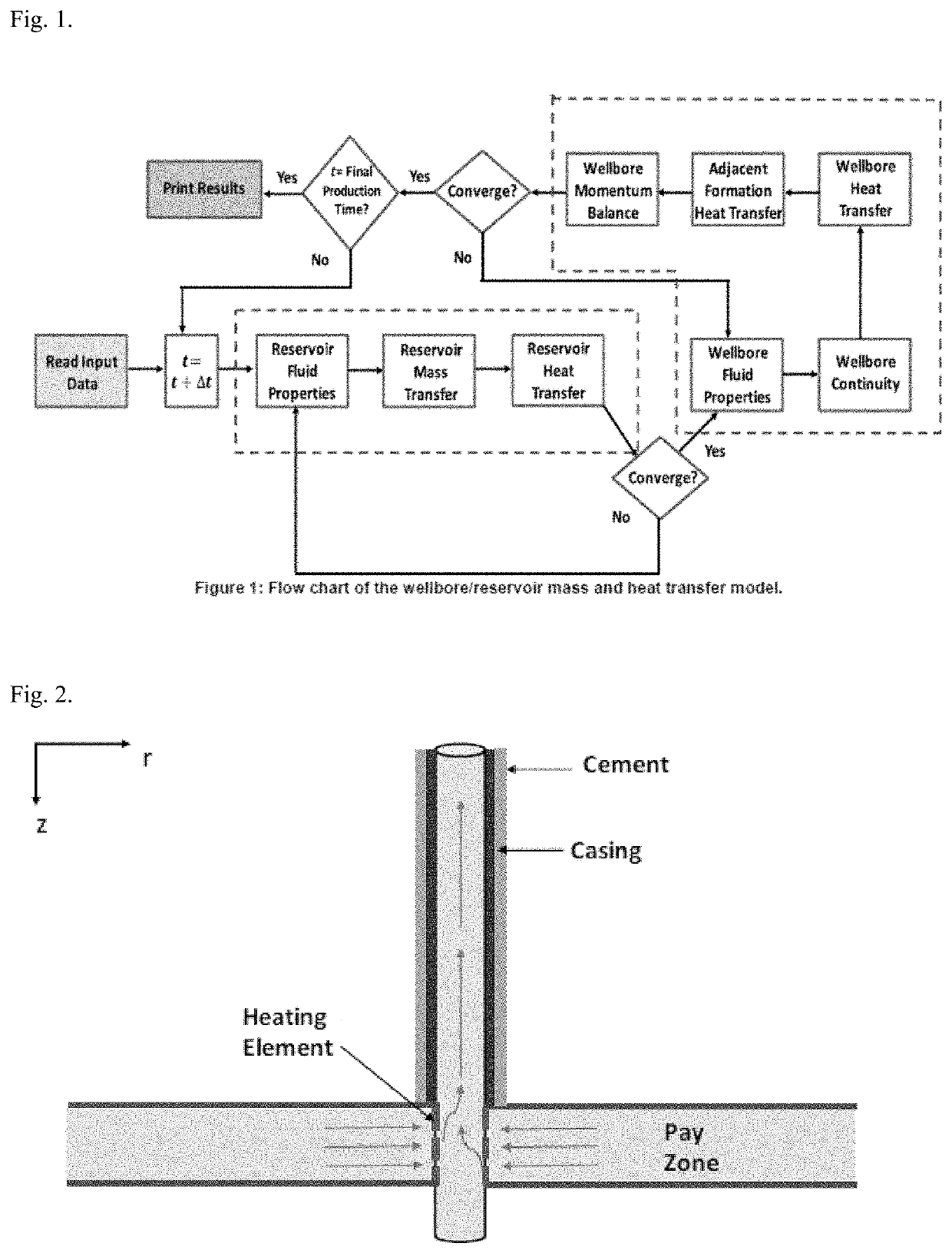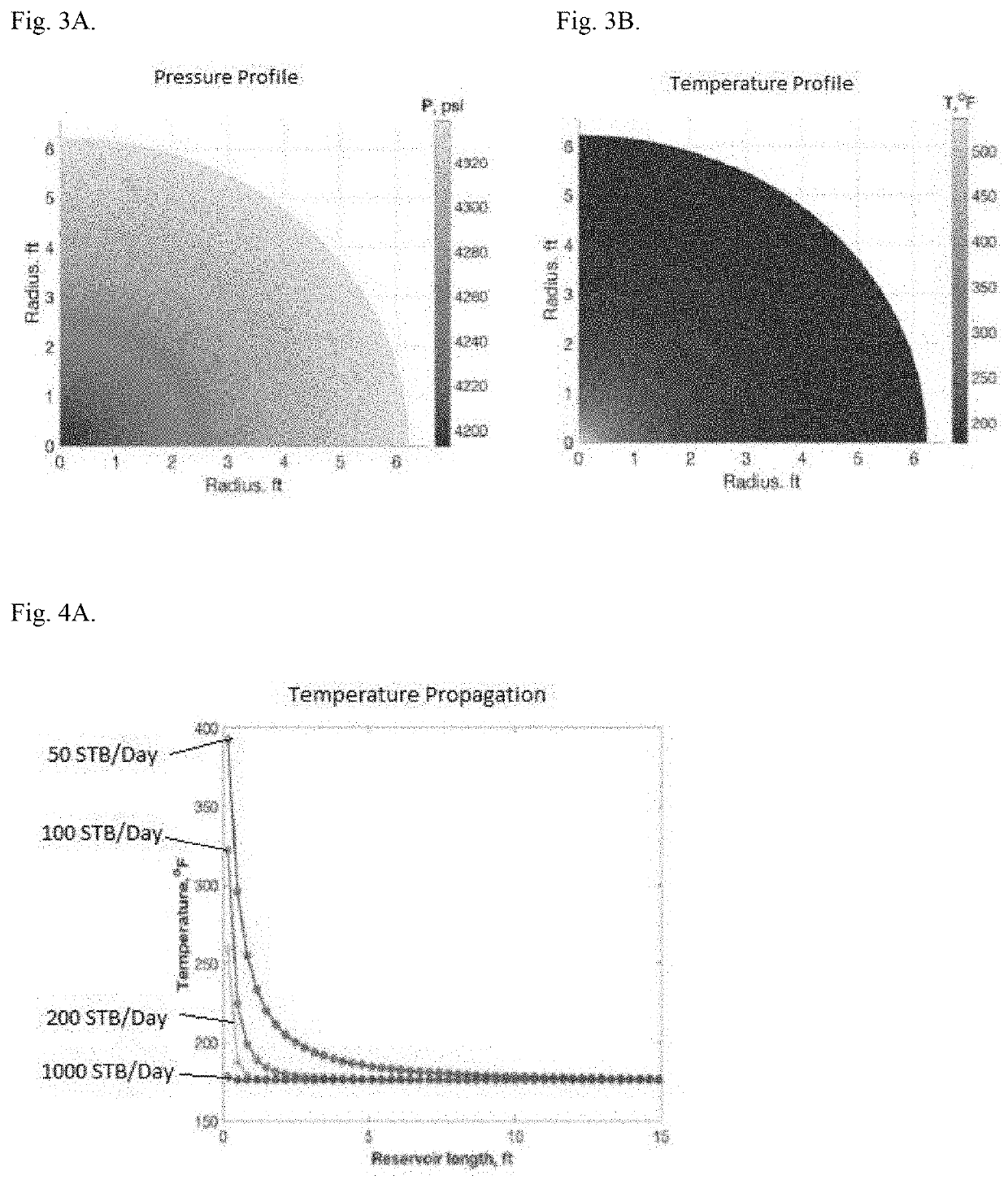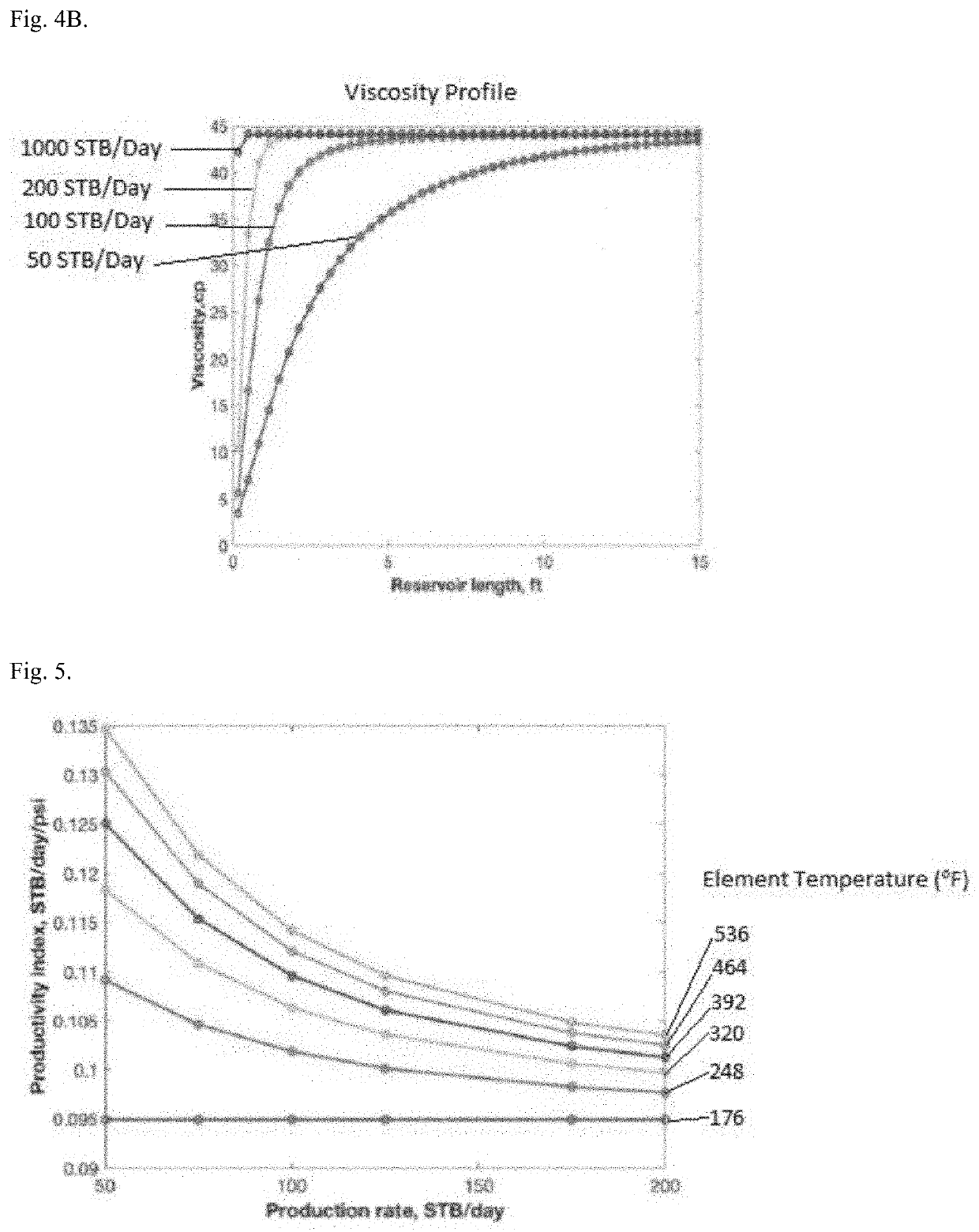Method of enhanced oil recovery using an oil heating device
a heating device and oil heating technology, applied in the direction of fluid removal, insulation, borehole/well accessories, etc., can solve the problems of large capital investment, inability to produce commercially under normal reservoir conditions economically, and restricted applications, so as to improve oil recovery and reduce oil viscosity
- Summary
- Abstract
- Description
- Claims
- Application Information
AI Technical Summary
Benefits of technology
Problems solved by technology
Method used
Image
Examples
example 1
[0086]FIG. 1 shows the flow of the model which starts from reading the input data. Then, the reservoir model is applied by solving the reservoir fluid properties, pressure, and temperature until convergence. The convergence is declared when the change in two consecutive pressure and temperature profiles is negligible. The reservoir model provides the temperature of the reservoir fluids entering the wellbore. Then, the wellbore model is applied by solving the wellbore fluid properties, velocity, temperature, and pressure until convergence. This is done at each time step until reaching the final production time. The mathematical formulas for fluid properties and reservoir / wellbore model are discussed below.
Heavy Oil Fluid Properties
[0087]Different correlations were developed for the heavy oil fluid density and viscosity which varies based on the reservoir type. In this work, the heavy oil viscosity is estimated using Beggs and Robinson [Beggs, H. D., & Robinson, J., 1975, Journal of P...
example 2
[0098]The introduced heating element can improve reservoir fluids' mobility as well as assist fluid lifting in the wellbore. Hence, the study will focus on the temperature and pressure responses of the reservoir / wellbore system before and after placing the element. The wellbore, formation, and fluids properties used in this study are shown in Table 1.
TABLE 1Input data for the integrated heat and mass transfer modelInput DataSi UnitField UnitWellbore PropertiesWellbore radius, rw0.104m0.34ftInner casing radius, Rw0.0628m2.475inchOverall heat transfer coefficient, U0.1 kJ / 0.00488 Btu / (s · m2 ·° C.)(hr · ft2 ·° F.)Heat transfer coefficient, h60 × 10−3 kJ / 2.93 × 10−3 Btu / (s · m2 ·° C.)(hr · ft2 ·° F.)Ambient temperature, Tb25°C.77°F.Flowing surface pressure, Ptf0.69MPa100psiWellbore length, L1220m4000ftReservoir / Formation PropertiesReservoir initial pressure, PR34.5MPa5000psiAPI gravity10 10 Reservoir temperature, TR80°C.176°F.Formation rock density, ρma2700kg / m3168.48lbm / ft3Formation...
PUM
 Login to View More
Login to View More Abstract
Description
Claims
Application Information
 Login to View More
Login to View More - R&D
- Intellectual Property
- Life Sciences
- Materials
- Tech Scout
- Unparalleled Data Quality
- Higher Quality Content
- 60% Fewer Hallucinations
Browse by: Latest US Patents, China's latest patents, Technical Efficacy Thesaurus, Application Domain, Technology Topic, Popular Technical Reports.
© 2025 PatSnap. All rights reserved.Legal|Privacy policy|Modern Slavery Act Transparency Statement|Sitemap|About US| Contact US: help@patsnap.com



